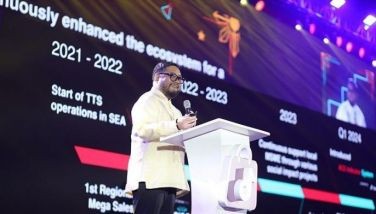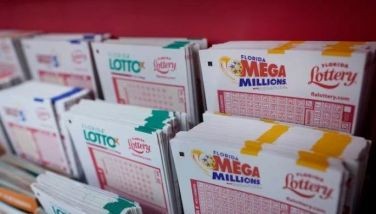Developing creativity in science among our youth
May 12, 2005 | 12:00am
Science teachers can inspire students with excellent lectures and well-planned experiments designed to make science interesting and discovery exciting. Behind every successful scientist is a high school teacher who influenced the student to pursue a science degree in college. College is a turning point or a decision time in the life of a young person. A student who is inspired because of the stimulating and persuasive ways a high school teacher taught astronomy, physics, geology, chemistry, or biology in the classroom, will choose to pursue a science course in college because of sheer fascination with science, despite the prospect of a financially unrewarding scientific career or an uncertain future after college.
Science students and researchers should seek out outstanding research mentors to work with. Research professors in college and graduate school and leaders of research projects are the source of inspiration of young researchers and also serve as their most important role models for creativity in scientific research. Research mentors play the most influential role in the way science is conducted by their young associates. It should be emphasized that the quality of research depends principally on the persons involved, and the research leader is mainly responsible for the quality of work in his laboratory. It should be the wish of every research mentor to have his students and researchers exceed his accomplishments or outdo him. A truly creative researcher is one who will deviate from or expand the work of his mentor and pursue his own interests, while an uncreative researcher will continue to do his mentor’s work without variation or innovation. To move science forward, it will be good to encourage and train our young researchers to think and learn to do research independently.
A country’s political leaders, science administrators, and science agencies should provide the vision and mission that will guide the general direction that S&T (science and technology) research will take to become useful and relevant to society. This provides a general framework by which great leaps of creativity and productivity in science could be made. A national S&T program with ambitious and far-reaching goals can capture the imagination of a nation or of the world, unite many people, and produce a lot of new scientific information as well as new useful technologies. The Cassini probe circling Saturn brought images of Saturn’s rings back to Earth at the speed of light. The US inter-planetary probe and space shuttle exploration programs, initiated in the 1960s, have provided us a great wealth of information about the Earth and information within and outside our solar system. (We recall that it was only a hundred years ago that the Wright brothers flew the first plane.) The "Star Wars" anti-missile defense program of the US, initiated in the 1980s, is credited with having ended the Cold War with the USSR and causing the demise of the Soviet Empire and communism. Both the space exploration and anti-missile defense programs are also credited with having spawned many new commercial technologies, e.g., bigger capacity IT chips and computers, and miniaturized instruments.
We also recall that science fiction and futuristic books have long fired up the dreams and imagination of many generations of humanity. Scientists have been inspired to make the fantasy of scientific gadgets and robots described in these books a reality. Today, writers continue to capture our imagination because so much of what was imagined then has actually come true! We can think of creative books such as H.G. Well’s The Time Machine, Jules Verne’s Voyage to the Center of the Earth, Lewis Carroll’s Alice in Wonderland, and TV shows like Dick Tracy and Gene Rodenberry’s Star Trek, which all provided important ideas for scientific development.
Ways to develop creativity, independence and responsibility in science among our youth
And so to develop creativity in science among our youth, we must equip them early on with the tools of mathematics and the basic sciences. We must stimulate their curiosity of the natural world and encourage them to become inquisitive. We can guide them toward new ways of looking at things, at the same time allowing them to do their own thinking that would be different from the perspective of their mentors. It is imagination and creativity tempered with discipline and analytical prowess that translate to significant strides in science. Our youth should be encouraged to read the accounts of the discoveries and the biographies of outstanding scientists such as Nobel Prize winners who exhibited these traits and could serve as their models. Young researchers should seek out good and kind mentors. These mentors will guide them well by their examples and encourage them to pursue higher academic degrees and more advanced technical training. Mentors can help our young researchers appreciate the value of science to human life, society and the environment, and encourage and prepare them to become creative, independent-minded and responsible scientists.
BrandSpace Articles
<
>
- Latest
Latest
Latest
February 8, 2024 - 8:45am
February 8, 2024 - 8:45am
January 29, 2024 - 1:22pm
January 29, 2024 - 1:22pm
January 26, 2024 - 11:13am
By Issam Ahmed | January 26, 2024 - 11:13am
January 25, 2024 - 4:37pm
By Kyoko Hasegawa | January 25, 2024 - 4:37pm
January 22, 2024 - 9:17am
January 22, 2024 - 9:17am
January 21, 2024 - 12:52pm
January 21, 2024 - 12:52pm
Recommended























